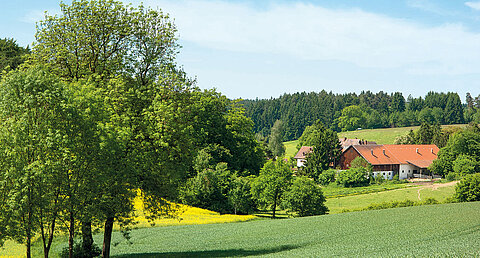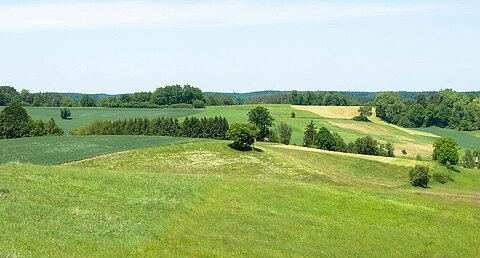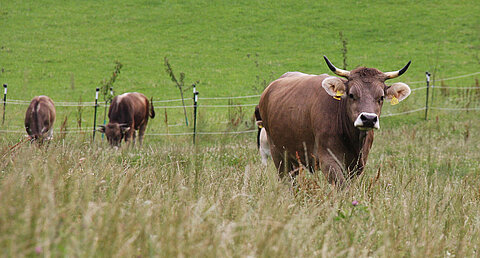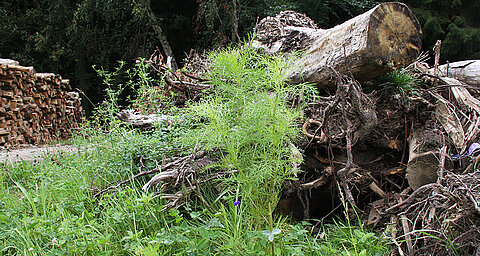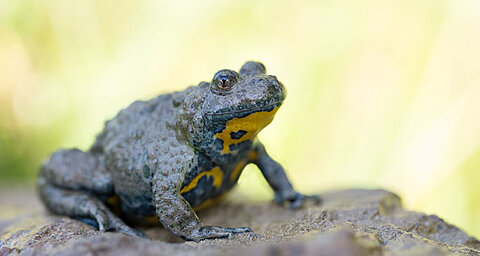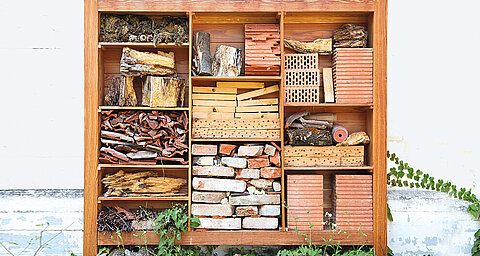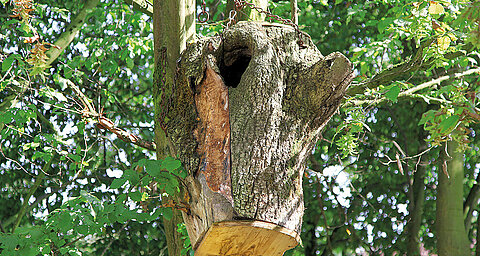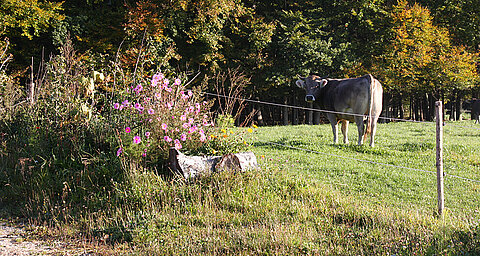Ehrensberger farm
HiPP's biodiversity farm
In remote Ehrensberg, HiPP tests environmental measures to improve biodiversity. The objective is to work this organic farm in a sustainable and effective way as a model business until 2015. In the future, it is intended to be a model for HiPP producers.
We want to show how the sustainability and protection of biodiversity can be incorporated into the daily routine of a farm.
Scientific data cultivation and collection plan
Natural determining factors for the location of farms and farmland produce concrete suggestions for improving species diversity and conserving nature. In this project, we are working together with Bioland, the Technical University of Munich and the Technical University of Hannover, as well as with the Bavarian Council for the Protection of Birds.
Old breeds on the farm
To increase species diversity, rare ancient breeds have found a home on the farm: for example, the original Braunvieh cattle, of which only 500 animals remain in Bavaria, Skudde sheep (currently 1000 animals in Germany), and the ancient breed of Appenzeller Spitzhauben hen.
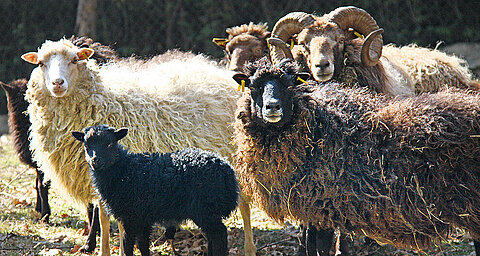
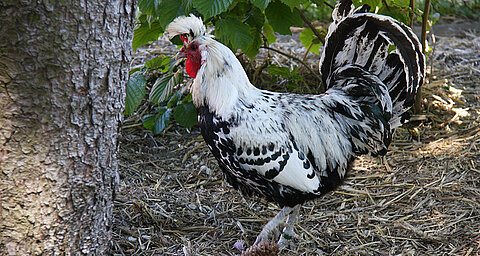
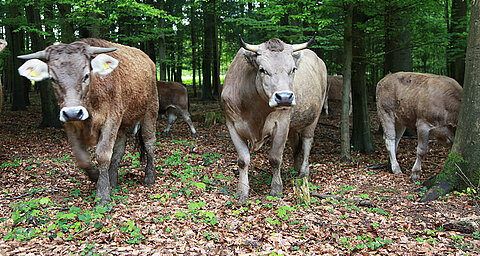
According to the Red List of threatened farm animals, Braunvieh's original cattle are endangered. At the Ehrensberg farm, the HiPP model project for sustainable agriculture is maintained for conservation purposes. The original Braunvieh cattle descend from the so-called Torfrind cattle, which grazed in lakes on the edge of the Alps more than 2,000 years ago.
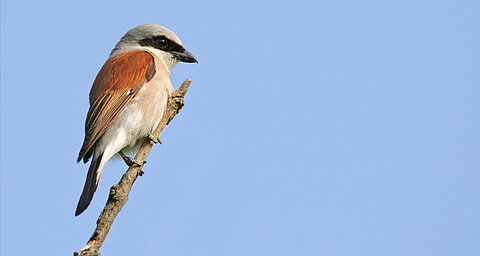
The red-backed shrike bird is an important species for an intact ecosystem. Intensive agriculture has caused a decrease in hedges and shrubs as a natural habitat for birds. Causing it to be in danger of extinction. This rare bird is well known for nailing its victims on wires or thorns. According to popular belief, always collect nine insects before eating them. HiPP has created new habitats for the Red-backed Shrike on the Ehrensberg farm and, as learner initiatives, has established fallen wood hedges (branches) on the edges of the fields.
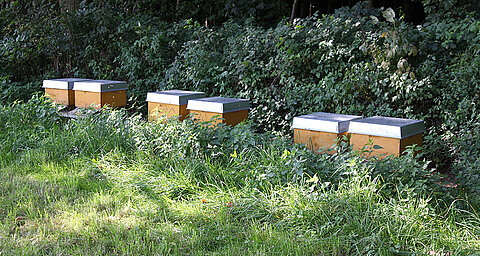
Many people could live without honey, but not without bees. The insects not only produce a delight for breakfast, but above all, pollinate the flowers. By doing so, they ensure the existence of plants and good crops for farmers. Without these animals, the fruit harvest would be in jeopardy. When bees die or are sick, it affects us all. That is why HiPP is also involved in preserving natural habitats for bees through biodiversity projects. The Ehrensberg farm now also houses six bee colonies, to combat the dramatic collapse of their populations.
New ecosystems such as rows of trees, protective hedges (for example, for the Red-backed Shrike), deadwood hedges, root holders and flower strips were created at the edges of fields and in the prairies to provide a habitat for reptiles, birds, small mammals and insects. The goal of deadwood hedges is not to create new hedges by planting them, but to let the wind spread the seeds naturally. The branches and sticks are stacked as a loose wall, which also provides protection for growing plants. The advantages of such constructions are, on the one hand, the low costs of creating them and, on the other, stacked dead wood offers a home for numerous species.
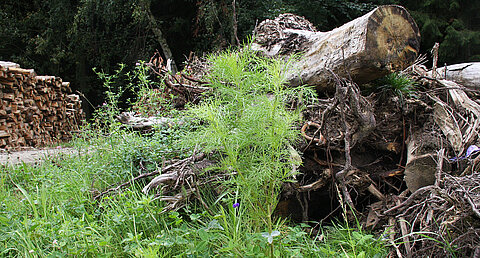
In conventional agriculture, fields and meadows are planted to the edge of forests for more yield. In order to support biodiversity and sustainability, we have planted wild hedges with deadwood and native wildflowers. These provide animals with a place to live, offer livestock protection from the wind, and reduce soil erosion.
With regard to improving soil fertility, the project has tried different methods, including using rock meal to bind ammonia, solid manure fertilization, and other natural methods. In addition, measures are used to support animal health, such as the use of effective microorganisms or organic straw as trash.
Many things affect soil quality, especially in agriculture.
- Overdevelopment
- Chemical contamination by industry and agriculture with long-term consequences on the health and yield capacity of the soil.
- Physical contamination due to inadequate treatment (heavy machinery and tillage implements that destroy sensitive soil complexes, making chemicals necessary to maintain performance).
- Work it at inappropriate times.
- Loss of organic substance and, therefore, of yield capacity through the use of incorrect fertilizers, incorrect crop rotation and incorrect soil treatment.
- Deterioration of groundwater due to improper use of the soil.
More HiPP projects for biodiversity
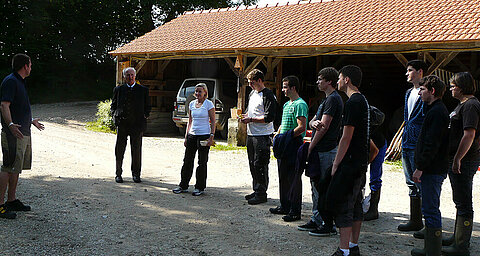
The "Biodiversity Farm Project" focuses on agriculture and the possibilities of enhancing biodiversity within this context. HiPP employees experience this project firsthand, as do school-age children, students, and other interested groups, as HiPP offers regular tours of the farm to make the theme "compressible."
Support from the German Federal Foundation for the Environment (DBU)
Due to the good results and positive experiences of this project, we have decided to expand the experiment to the cultivation of vegetables and grains. Together with other companies from the Association of Organic Food Manufacturers (AöL), HiPP will seek for 2016 to implement in more farms the methods for the preservation of biodiversity in agriculture.
Focus and objective
The task is to develop a system to record and assess biodiversity and prepare the results in such a way that food companies can transmit them credibly and transparently. The functions of species and populations that are important for agricultural production ("management-based biodiversity") should be considered, as well as paying special attention to preserving the diversity of species and biotopes for the protection of nature ("nature protection biodiversity").
Together with AöL, the Technical University of Munich, the Leibniz University of Hannover and associated companies, we are investigating the effects of agriculture on biodiversity within the organic food value chain. Practical steps will be developed on how improvements can be implemented. In the long term, we want to provide pragmatic advice to HiPP producers with cost-effective measures taking into account the preservation of biodiversity and thus increase the number of producers committed to it.

